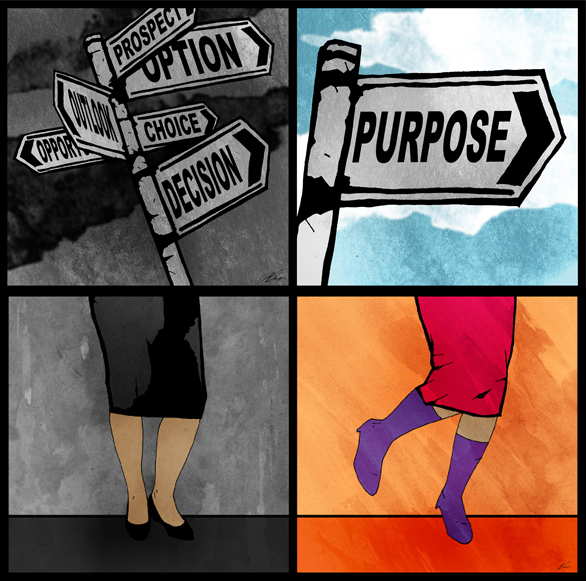
Kylie Dunn embarked on a mission to change her life by emulating TED Talks. Here, illustrations of her “30 days of drive” and “30 days of fashion” activities. Illustrations: Matthew Dunn
By Kylie Dunn
What do you get when you cross a 39-year-old perfectionist with 54 TED Talks and far more honesty than any person probably needs to experience? You get my Year of TED.
I’ve been inspired by TED Talks for years, and felt the urge to do something noteworthy and challenging to ring in my fortieth year on the planet.
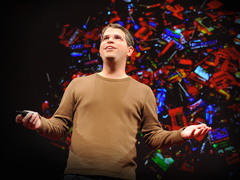 Matt Cutts: Try something new for 30 days
Inspiration struck when I watched Matt Cutts’ talk, “Try something new for 30 days.” Something in this talk reminded me of A.J. Jacobs’ “My Year of Living Biblically” — and the seed was sown. I decided to develop a list of new-to-me activities based on TED Talks, and to try each one of them in my life for 30 days.
Matt Cutts: Try something new for 30 days
Inspiration struck when I watched Matt Cutts’ talk, “Try something new for 30 days.” Something in this talk reminded me of A.J. Jacobs’ “My Year of Living Biblically” — and the seed was sown. I decided to develop a list of new-to-me activities based on TED Talks, and to try each one of them in my life for 30 days.
How did it work? On the 1st of the month, I’d start one new activity, and then roll out another on the 15th — so at any given time I was doing two activities that were new to me. Some activities were practical (30 days with less meat), others more philosophical (30 days of vulnerability). To plan out a year’s slate of 23 activities, I listened (or re-listened) to around 200 TED Talks. The whole list took a couple of months to plan out, and I left a few gaps in case there were any new talks during the year I really wanted to include. I pledged to blog the full experience, being completely vulnerable as I wrote.
I also decided to contact each of the speakers whose talks inspired my activities, to let them know just how much their talk resonated with me. Many of them wrote back — I cannot tell you how it feels to open your inbox and find emails from Seth Godin, Alain de Botton, Barry Schwartz, JD Schramm, Susan Cain, Derek Sivers and Richard St. John. Their words were powerful, and many were generous with support and encouragement, too.
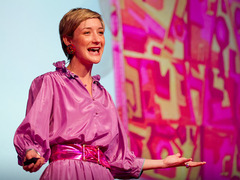 Jessi Arrington: Wearing nothing new
Carl Honoré and Sheena Iyengar tweeted about the project, which gave the blog a massive boost; David Logan had a lengthy email chat with me about leadership.
Jessi Arrington: Wearing nothing new
Carl Honoré and Sheena Iyengar tweeted about the project, which gave the blog a massive boost; David Logan had a lengthy email chat with me about leadership.
On November 1, 2011, I started the year-long challenge. My first activity was 30 days of fashion, inspired by Jessi Arrington’s talk “Wear Nothing New.” I thought this would be a fun, easy way to start the project — to break free from my standard black, white and gray wardrobe and do some strategic shopping at secondhand clothing stores to make my appearance more colorful. But by the end of day two, I was feeling incredibly exposed to the world. When it comes to clothing, my subconscious mantra had always been “just don’t stand out.” Not caring whether people thought I was a little odd for dressing a certain way?
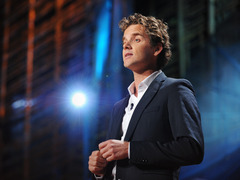 Graham Hill: Why I'm a weekday vegetarian
It felt like a big change.
Graham Hill: Why I'm a weekday vegetarian
It felt like a big change.
I realised that this entire project would be harder than I ever imagined.
By Activity 4, in mid-December, I had a pretty good routine down: think through the activity, then set up practical steps to put it into action. And by Activity 9, I was pleasantly surprised to find that 30 days of less meat was an easy challenge. For the month of February, I became a weekday vegetarian, as suggested in Graham Hill’s talk. Not only was this activity inspiring, but I liked the change in my diet … and in my weekly grocery bill. I’ve kept it up ever since.
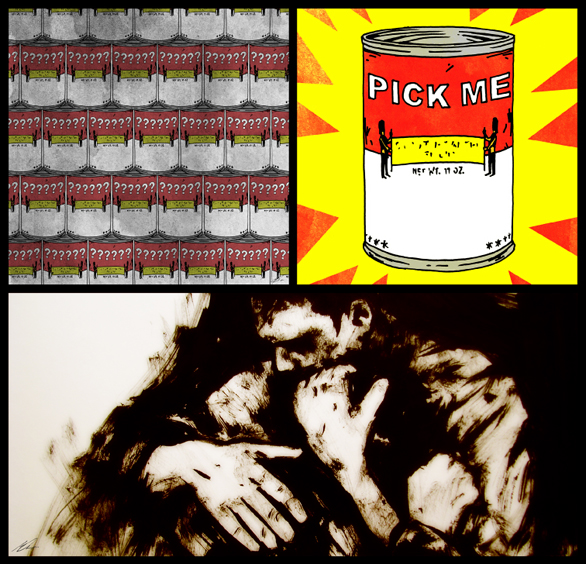
“30 days of choice” and “30 days of compassion.” Illustrations: Matthew Dunn
As I got into the second half of the year, my Year of TED became a struggle. The last six activities were all so introspective that I’m surprised I made it to the end of October.
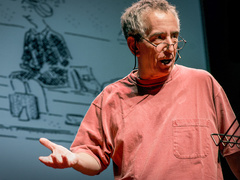 Barry Schwartz: The paradox of choice
30 days of choice was based on three talks — Barry Schwartz’s “The paradox of choice,” Sheena Iyengar’s “The art of choosing” and Alain de Botton’s “A kinder, gentler philosophy of success.” This activity involved putting a magnifying glass on my choices — being aware of what was driving my choices, setting boundaries to limit my choices when I could, and recognizing that there is no such thing as a perfect choice. I also took time to think about what success means to me — writing this out helped me understand myself better and gave me vital information to help inform future choices. That said, who enjoys looking at themselves on paper in the third person? I wasn’t always proud of how I dealt with past choices.
Barry Schwartz: The paradox of choice
30 days of choice was based on three talks — Barry Schwartz’s “The paradox of choice,” Sheena Iyengar’s “The art of choosing” and Alain de Botton’s “A kinder, gentler philosophy of success.” This activity involved putting a magnifying glass on my choices — being aware of what was driving my choices, setting boundaries to limit my choices when I could, and recognizing that there is no such thing as a perfect choice. I also took time to think about what success means to me — writing this out helped me understand myself better and gave me vital information to help inform future choices. That said, who enjoys looking at themselves on paper in the third person? I wasn’t always proud of how I dealt with past choices.
Speaking of being unprepared, the 30 days of time activity brought a revelation that helped me understand some of my not-so-good perceptions of myself. Based on the talk “The psychology of time” by Philip Zimbardo, I took a careful inventory of how I think about the past, present and future.
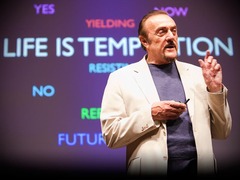 Philip Zimbardo: The psychology of time
I found that what Zimbardo calls “past negative” weighs heavily on my mind. I thought hard about what I needed to do to shift my focus.
Philip Zimbardo: The psychology of time
I found that what Zimbardo calls “past negative” weighs heavily on my mind. I thought hard about what I needed to do to shift my focus.
My complete list of activities, in order: fashion; thanks, praise and mindfulness; better listening; living the 3 A’s; an Asian diet; drive; slowing down; simplicity; less meat; more happiness; preconceptions; letters; starting a movement; choice; being wrong; vulnerability; time; compassion; and balance.
By the end of October 2012, I had completed 21 activities and one project — the development of the Do-Pad, a notepad for people who like to doodle, based on Sunni Brown’s “Doodlers, unite!” I learned so much about my strengths, my weaknesses, my hopes and, most of all, what I really want in this world. I am extremely proud that I finished the full year.
These activities were emotional, particularly since they coincided with the stresses and demands of day-to-day life. At times, they helped me get through hard times — I’m so glad that I was working on “more happiness” when we visited my father-in-law for the last time. At other times, these challenges made my life so much more difficult. I spent way too much time on “choice” and “being wrong” when I was far too busy with work.
Overall, here are the main lessons that I’ve taken away from this project:
- You never really know what you are capable of until you try. I’m stronger than I thought I was — certainly more so than I ever thought I could be.
- Being open about imperfections is important. It has deepened my connections with so many others.
- There is a power in simply doing something. Really, don’t underestimate it.
- Sometimes you can be too introspective, to the point that it is not good for your mental health.
- If you are going to try something like this, you need to build in time to be kind to yourself.
In the end, I’ve developed a new appreciation for my capacity to be courageous. I’ve always known that I am a survivor, and that I usually come out the other side of life challenges as a better person – if not a little more scarred and cynical. I always thought of strength and courage as things I wanted in my life, but wasn’t quite sure how to harness them. Now I see that this is already inside of me. It’s just one of the realisations this project allowed me to discover, and which I’m still trying to process.
I’d like to thank TED for providing me with such a fantastic source of inspiration. And I’d love to thank the speakers who inspired me to take action and think differently. Most important, though, I couldn’t have done this without the love and support of my partner, my family (particularly my wonderful brother for his artwork, featured above) and my close friends. Hopefully it wasn’t too onerous.
Comments (20)
Pingback: Week 31/2025: Experiments in time blocking
Pingback: How my Year of TED was a lot like the Wizard of Oz: A Q&A with Kylie Dunn | Bamboo Innovator
Pingback: How my Year of TED was a lot like the Wizard of Oz: A Q&A with Kylie Dunn | Best Science News
Pingback: http blog ted com 2013 03 27 my… | Kathys LinkBook
Pingback: And so it begins | The Kids These Days
Pingback: inspiration | Annotary
Pingback: TEDxStHelier Update 19Aug13 – Must Watch TED Talks | TEDxStHelier
Pingback: Top Twelve TED Talks | Zemo's Blog
Pingback: 18 Things I Loved on the Internet in March (Resources for Writers, Creators, and Dreamers) | DIY Writing
Pingback: UPDATE 1-Aging vehicles leave Toyota North America chief optimistic on new sales | eJumo
Pingback: US to propose rules slashing health-harming emissions from cars | eJumo
Pingback: Today is HUGE – I got fired! 365 days of getting it done style! | 365 days of getting it done
Pingback: My Year of TED: How 54 talks changed a life | TED Blog | Real Possibilities